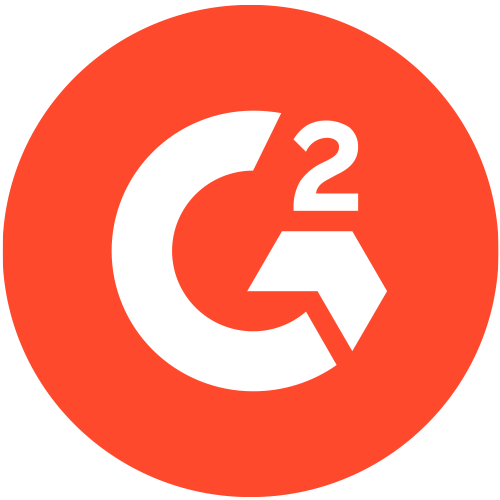Streamline every purchase request, making it simple and compliant. Guide employees through the process while bringing real-time visibility and control to finance and procurement teams.
Guided Procurement Software
Streamline procurement from the start.




Simplify Purchase Intake and Approvals

Spend Orchestration for All Stakeholders
Provide employees with a single entry point for procurement requests, automating the routing to required approvers. Stakeholders can approve requests directly within the Paylocity system or through integrated business applications such as Jira or Docusign.
Better Intake Drives Better Purchasing
Eliminate confusion and friction for employees. Direct them to gather the required information and documentation for various stakeholders like IT, procurement, and legal so that all necessary approvals are secured before a purchase is made.


AI Powered Insights
Automatically extract crucial data like auto-renewals, pricing details, and tested security controls from documentation. Generative-AI also pre-fills request information to further automate and speed up the intake process.
Easy Set Up with No-Code Workflows
Our dynamic, easily configured workflows offer flexibility to govern different types of spend and related processes such as vendor or NDA approvals. Start with a template from the library and adjust it to meet your business policies.


Spend Analytics for Proactive Procurement
Real-time insights help you quickly identify and address potential bottlenecks. Monitor SLAs across all approvers, stakeholder teams, requesters, and vendors.
Vendor Collaboration Made Simple
Easily build vendor questionnaires to get the answers and documentation that all stakeholders need in the approval process. Information submitted by the vendor seamlessly flows to the relevant stakeholders for review and approval.

Loved by Employers and Employees



Related Resources
FAQs
Why should I use procurement software?
For some types of businesses, procurement software is essential to operations. But no matter how extensive an organization’s procurement needs are, procurement software offers several benefits:
- It provides a platform for multi-stakeholder collaboration on information and documentation sharing and approval workflows.
- It automates and streamlines the procurement process, reducing manual tasks, paperwork, and errors.
- It improves efficiency by providing a centralized platform for managing requisitions, purchase orders, and supplier information.
- Procurement software enhances visibility into procurement activities, allowing organizations to track spending, monitor supplier performance, and enforce compliance.
- It helps optimize sourcing decisions by facilitating supplier selection, negotiation, and contract management.
- Procurement software gives better cost control, identifies cost-saving opportunities, and enhances financial management.
- It enhances communication with suppliers and facilitates timely delivery of goods or services.
How can I choose the best procurement software for my business?
When choosing the best procurement software for your business, start by assessing your organization’s specific procurement needs, considering factors like scalability, functionality, and ease of use.
- Identify the key features required, such as requisition management, supplier management, contract management, and reporting capabilities.
- Evaluate the software’s integration capabilities with existing business systems and compatibility with your workflows.
- Consider the vendor’s reputation, quality of customer support, and implementation process.
- Request demos or trials to test usability and engage with references or reviews for insights. Compare pricing models and the total cost of ownership.
Ultimately, you should select a solution that aligns with your business goals, offers scalability, and provides a user-friendly experience with strong vendor support.
What are the steps in procurement?
Procurement typically involves several stages or steps. These stages may vary depending on the organization and the complexity of the procurement process. However, the common procurement stages include:
- Need identification: Recognizing the requirement for goods or services.
- Planning: Defining the procurement strategy, specifications, and budget.
- Vendor selection: Identifying potential suppliers and inviting proposals or quotes.
- Evaluation and selection: Assessing supplier responses, negotiating terms, and choosing the preferred supplier.
- Contracting: Finalizing contractual agreements, including terms and conditions.
- Order fulfillment: Receiving and inspecting the delivered goods or services.
- Invoice processing and payment: Verifying supplier invoices, ensuring compliance, and initiating timely payment.
Effective management of these stages ensures a smooth and efficient procurement process.
What is the difference between procure-to-pay, source-to-pay, and spend management?
Procure-to-pay (P2P) refers to the procurement process, starting from requisitioning goods or services to paying suppliers. It covers activities like purchase requisition, supplier selection, PO generation, goods receipt, invoice processing, and payment.
Source-to-pay (S2P) is a broader concept that encompasses strategic sourcing, supplier management, contract management, and P2P. It focuses on optimizing the end-to-end procurement process, from sourcing suppliers to payment.
Spend management refers to the holistic approach of managing an organization’s spend across various categories, including direct and indirect expenses. Spend management aims to control costs, improve supplier relationships, and drive efficiency. It does not typically support sourcing activities.
What is P2P software?
P2P software refers to integrated solutions that automate the end-to-end process of requesting, procuring, receiving, and paying for goods and services within an organization.
Key components include purchasing functionality, approval workflows converting requisitions into POs, transmission of POs to suppliers via email, portals, EDI, or XML, and receipt handling on mobile devices, desktops, or docks.
Accounts payable invoice automation captures and automates invoices, matching against POs, supporting coding and approval, and managing exceptions.




